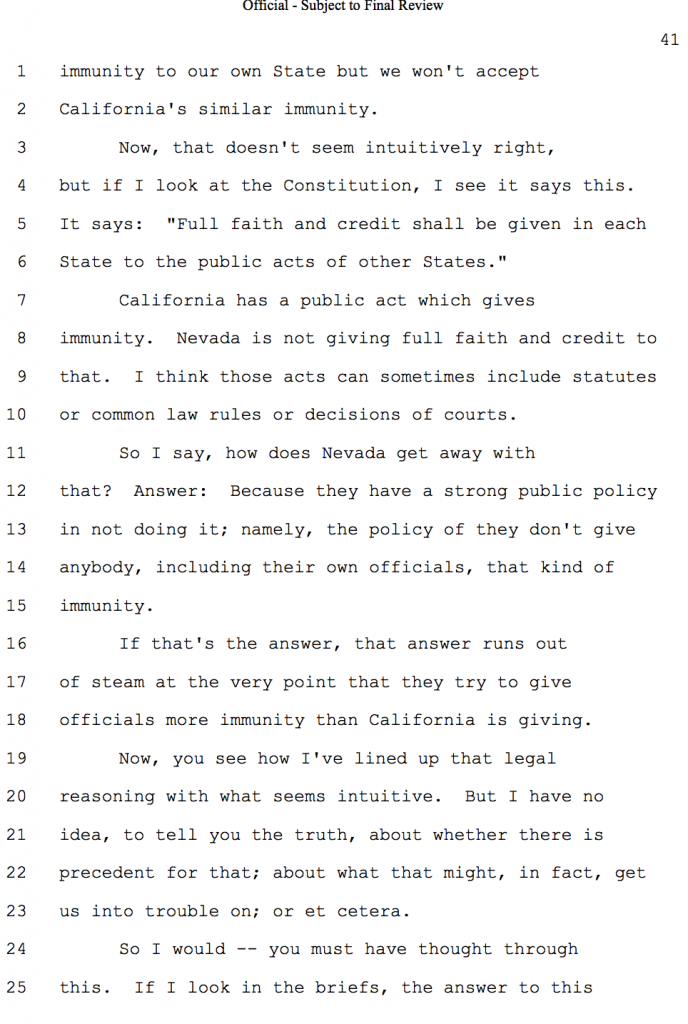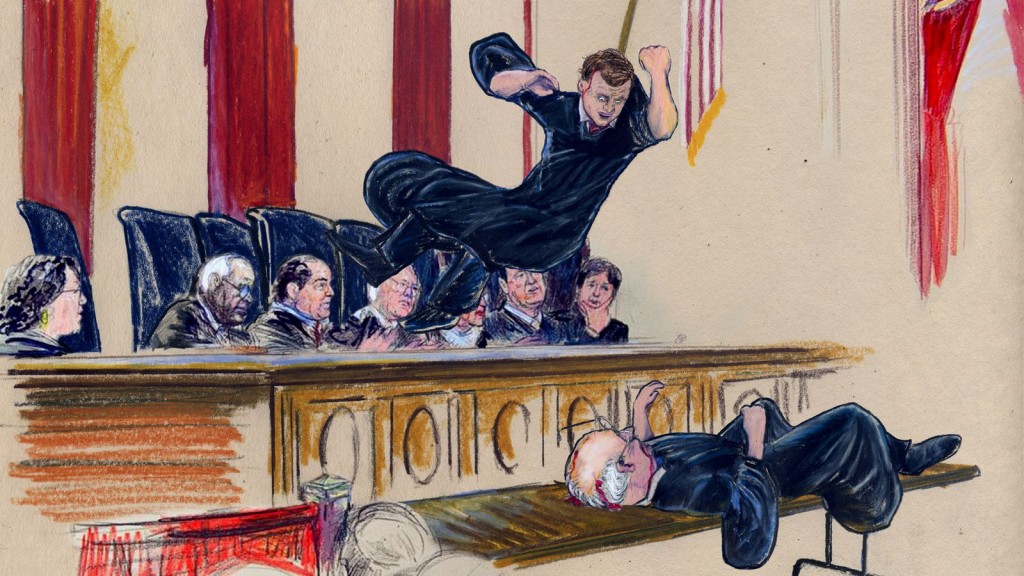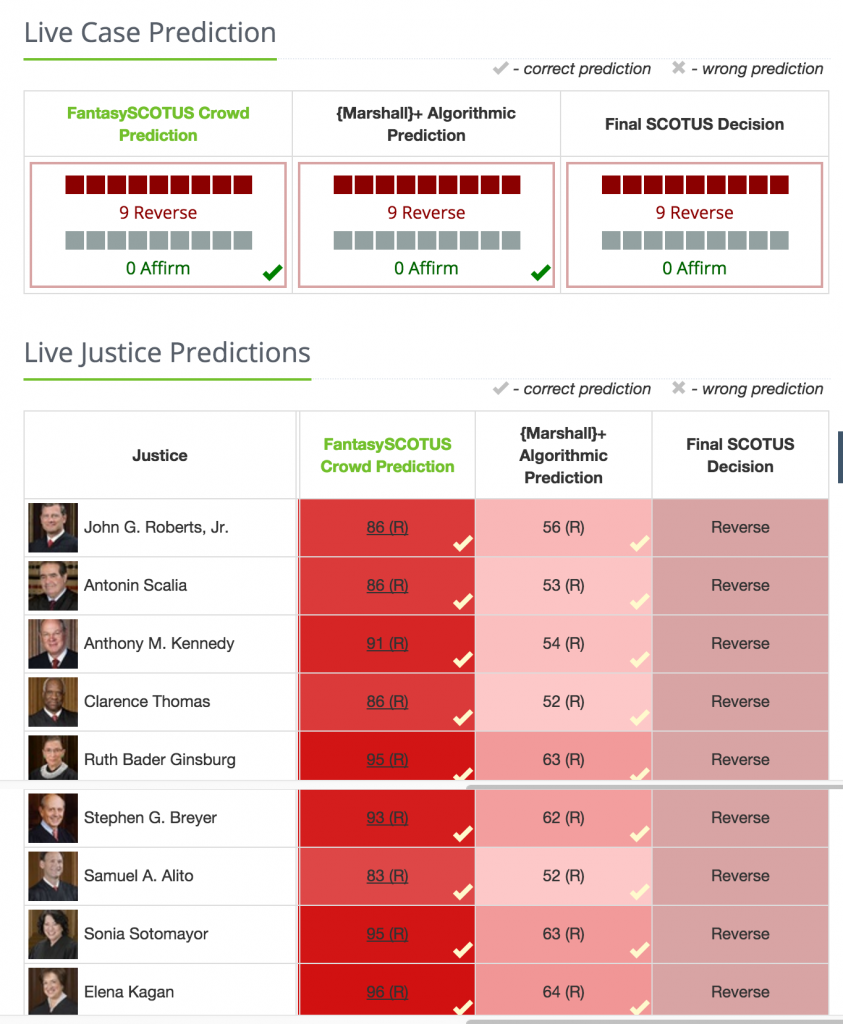In Collective Liberty, I chronicle how the ACLU’s position on the 1st Amendment has shifted with respect to campaign finance reform–but on the whole, they are still quite protective of free speech, even in controversial areas such as “hate speech” and “revenge porn.” And kudos to them to standing up to pressure from social justice warrirors. But one area where the ACLU has long abdicated civil rights is with respect to the right to keep and bear arms. I never quite understood why the ACLU was so keen on rejecting that the Second Amendment, explicitly enumerated in the Bill of Rights, guarantees an individual right to keep and bear arms. For the last three decades–long before Heller–the organization had taken the position that the Amendment protects “only the right of ‘maintaining an effective state militia . . . [T]he individual’s right to bear arms applies only to the preservation or efficiency of a well- regulated [state] militia. Except for lawful police and military purposes, the possession of weapons by individuals is not constitutionally protected.’”).”
This irony wasn’t lost even on liberal constitutional scholars. In his seminal 1989 article, The Embarrassing Second Amendment, Professor Sandy Levinson wrote that the Second Amendment “may be profoundly embarrassing to many who both support such regulation and view themselves as committed to zealous adherence to the Bill of Rights (such as most members of the ACLU).” In 1995, Alan Dershowitz observed, “Foolish liberals who are trying to read the Second Amendment out of the Constitution by claiming it’s not an individual right or that it’s too much of a public safety hazard don’t see the danger in the big picture. They’re courting disaster by encouraging others to use the same means to eliminate portions of the Constitution they don’t like.” Perhaps this explains it. There is no way that guns can achieve progressive goals, so it is easy to discard them as “dangerous” rights that need not be protected.
The ACLU’s 1980 meeting stated this calculus explicitly. “Nor does the ACLU believe that there is a significant civil liberties value, apart from the Second Amendment, in an individual right to own or use firearms. Interests of privacy and self expression may be involved in any individual’s choice of activities or possessions, but these interests are attenuated when the activity, or the object sought to be possessed, is inherently dangerous to others. With respect to firearms, the ACLU believes that this quality of dangerousness justifies legal regulation which substantially restricts the individual’s interest in freedom of choice.” With that calculus, the ACLU gave up on 10% of the Bill of Rights.
The ACLU’s aversion to guns has most recently manifested itself with respect to the proposal to block gun sales to people on the no-fly lists. For years, the ACLU has been challenging in courts the no-fly list as a violation and deprivation of civil rights and due process. And good for them!
In 2010, Laura Murphy, Director of the ACLU Washington Legislative Office Senate Committee on Homeland Security and Government Affairs at a hearing titled “Terrorists and Guns: The Nature of the Threat and Proposed Reforms.” Her testimony offers a stinging critique of the no-fly lists, and urges Congress not to prevent people on the list from purchasing a gun.
We write today about the use of terror watch lists to screen gun purchases. The ACLU believes that the current terror watch list process is deeply flawed. Evidence from numerous government reports document ill-designed and inaccurate lists with serious inadequacies in the process for placing and removing individuals from the list. Even worse, the lists are shrouded in secrecy: who is on the list, the standard for placement on the list, and the requirements for removal from the list are all secret. Given these problems, we do not believe that anyone should be deprived of the right to purchase a gun, or the right to fly, or any other benefit of membership in civil society based solely on placement on a terror watch list.
That was so five years ago. Today, Chris Geidner reports that the ACLU has seemingly changed its position:
“We don’t have a position on the legislation in question, but … have many criticisms of the overall watchlisting system as it currently operates,” ACLU’s media strategist Josh Bell told BuzzFeed News.
“There is no constitutional bar to reasonable regulation of guns, and the No Fly List could serve as one tool for it, but only with major reform,” said Hina Shamsi, the director of the ACLU National Security Project.
Shamsi made the comment despite the group’s ongoing lawsuit against the list — which she argued can have a “devastating” effect on those who find themselves on it.
“The government puts people on the No Fly List using vague and overbroad standards,” she said, adding that “it is wrongly blacklisting innocents without giving them a fair process to correct government error.”
Unbelievable, but not surprising. Joining the ACLU in this sudden-civil-rights-turnaround is the New York Times editorial page (via Charles C.W. Cooke). In 2014, they wrote about “Terror Watch Lists Run Amok.”
This would be laughable if it weren’t such a violation of basic rights. A democratic society premised on due process and open courts cannot tolerate such behavior.
On Friday, they mocked Republicans who found deficiencies in due process:
The House speaker, Paul Ryan, issued his party’s weak defense of arming potential terrorism suspects on Thursday morning: “I think it’s very important to remember people have due process rights in this country, and we can’t have some government official just arbitrarily put them on a list.” Mr. Ryan’s Senate colleagues demonstrated that they are more worried about the possibility that someone might be turned away from a gun shop than shielding the public against violent criminals.
See more from Eugene Volokh here.
Speaking of the New York Times, this quotation about how the Editor of the New York Times talks about issues suggests how seriously they take the issue of guns:
The day after the school massacre in Newtown, Conn., in December 2012, Arthur was in my office. Would it be possible, he asked, for us to go bananas on guns for a while? (He actually used an earthier expression than bananas.) I said yes, and mobilized our editorial writers. In the next month, we published about 15 editorials on the subject of guns, gun violence and gun regulation.
Go Bananas!





